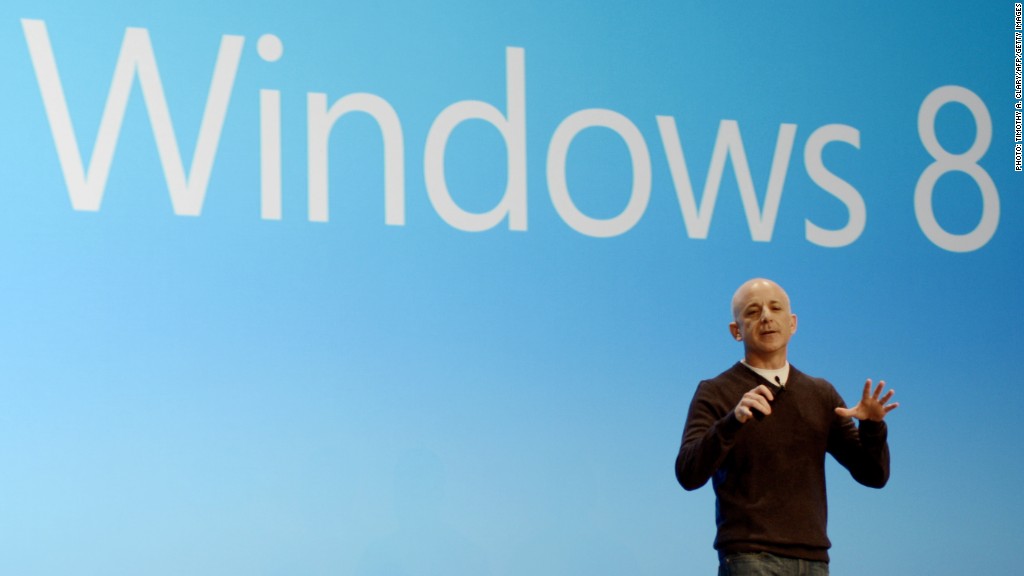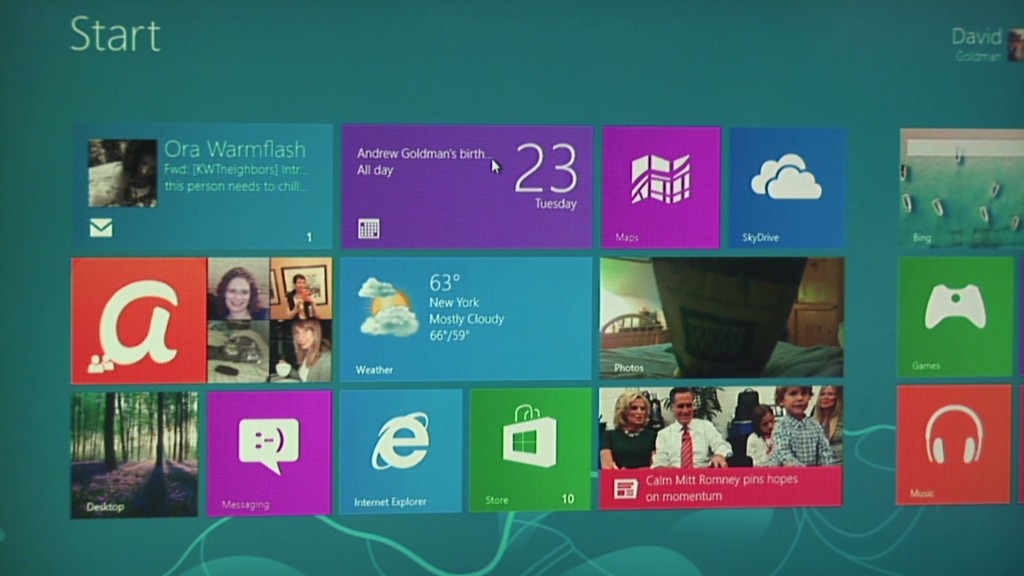
Two weeks after Apple's stunning management shakeup, Microsoft has announced a shocker of its own: Windows chief Steven Sinofsky, heir apparent to Microsoft CEO Steve Ballmer, left the company Monday.
Sinofsky had been at Microsoft (MSFT) since 1989, trusted with overseeing many of the company's core products, including Office and, most recently, Windows. At one point, he served as former CEO Bill Gates' technical adviser.
After building a reputation for delivering products successfully and on time, Sinofsky was given command of a Windows division in turmoil. Windows Vista had been a debacle of a release, and Microsoft needed someone to restore consumers' trust in its flagship product. Sinofsky was credited with turning Windows around and delivering Windows 7 on time and to rave reviews. It would became Microsoft's best-selling version of the operating system.
Over the past three years, Sinofsky captained the development and release of the radically redesigned Windows 8, the success of which is considered to be key to Microsoft's future. He also was at the helm of Surface, the first PC tablet of Microsoft's own design -- and a bold departure from Microsoft's software roots.
The new operating system and tablet have received mostly positive reviews, but analysts say consumer adoption has been tepid as users are slow to embrace the all-new user interface.

At the Windows 8 launch event in late October, Sinofsky certainly wasn't talking like an executive who was about to leave. Like Scott Forstall, the Apple (AAPL) executive who was shown the door following that company's Maps snafu, Sinofsky had a reputation as a taskmaster and was not particularly well-liked by other executives. Microsoft also has a habit of alienating or ushering out top talent whose star power begins to rival that of Ballmer.
But Sinofsky was conciliatory in his outgoing statement, unlike some recent departures -- most notably former software chief Ray Ozzie's smackdown of Microsoft's corporate culture two years ago.
"It is impossible to count the blessings I have received over my years at Microsoft," Sinofsky said in a statement. "I am humbled by the professionalism and generosity of everyone I have had the good fortune to work with at this awesome company."
Ballmer was considerably less nostalgic, simply saying that he was "grateful for the many years of work that Steven has contributed to the company," before talking about the succession plan.
Julie Larson-Green, Sinofsky's top lieutenant, will take the reins of the Windows division. After Sinofsky, she has been the most public face of Windows 8, and was often Microsoft's choice for product demonstrations at key press and developer events since the operating system was first unveiled in September 2011.
Many technology analysts believed that Windows 8's success would practically ensure that Sinofsky would be named the next CEO of Microsoft. But they also noted that if Windows 8 were to flop, he could just as quickly be marginalized.
In an interview with CNNMoney at the Windows 8 launch event, he dismissed criticism that Windows 8 would be too difficult for consumers to understand. He noted that the new "Start" screen gestures are simple enough for Windows users to grasp quickly.
He began to tell a story about how he was recently buying a new car, picking the same make and model as the reliable 10-year old car he was trading in. But he said when he got in the new car, he couldn't figure out how to start it up.
"I sat in the car, and had no idea where to put the keys," he said. "Then, I saw a big glowing button that said, 'Start.' That's all it took to figure it out."
"Let's call the old car, Car XP, and the new one Car 8," he said, smirking.

